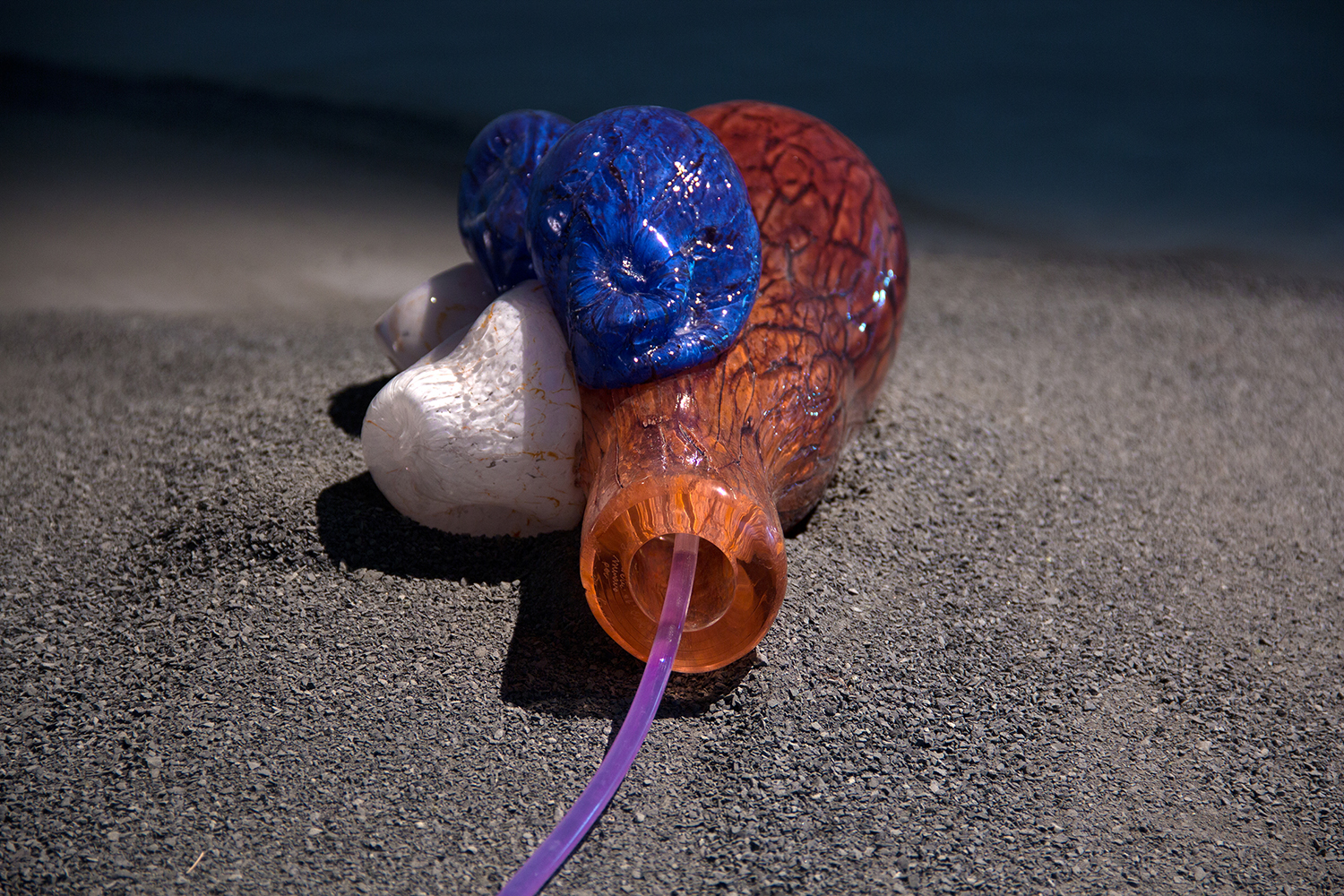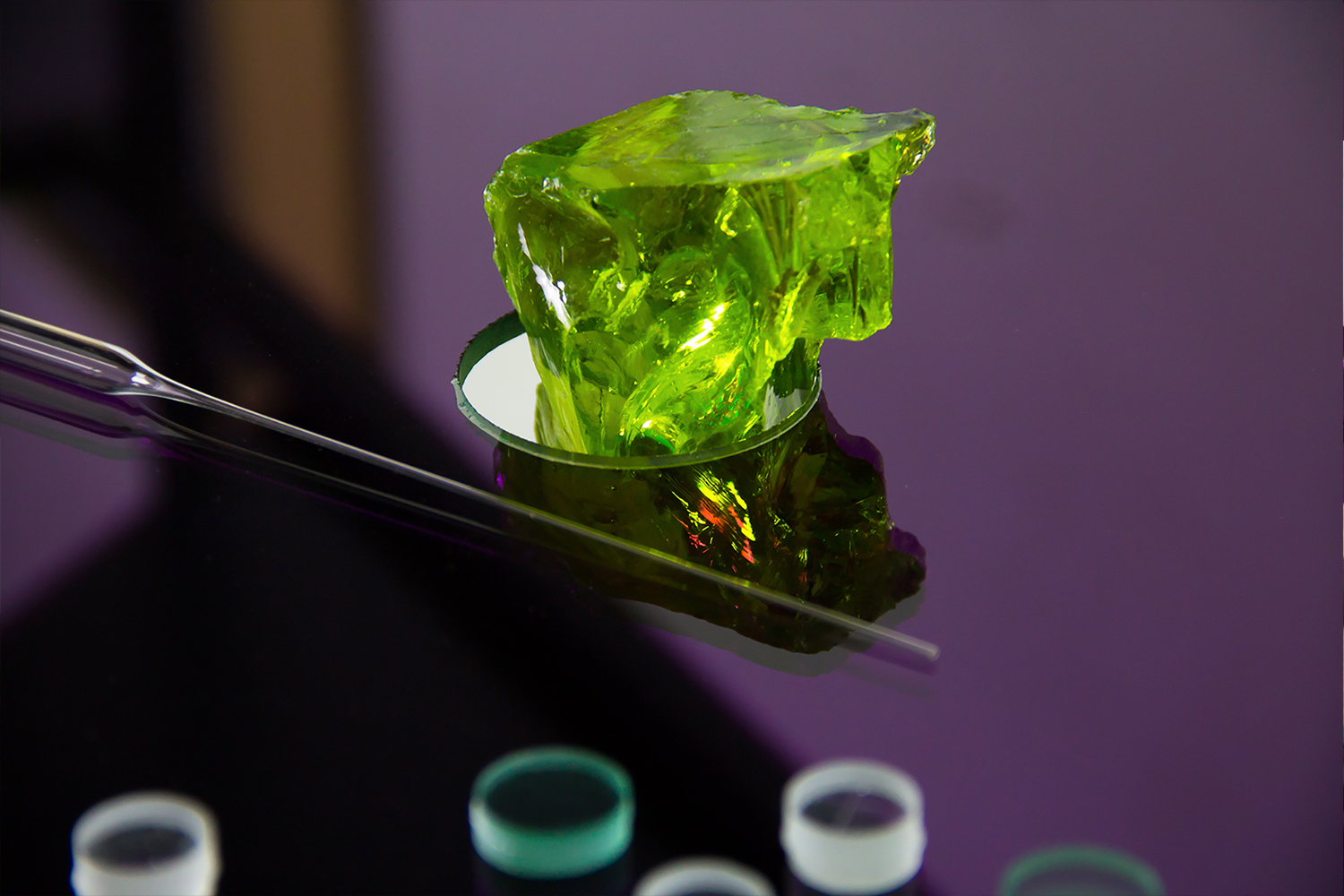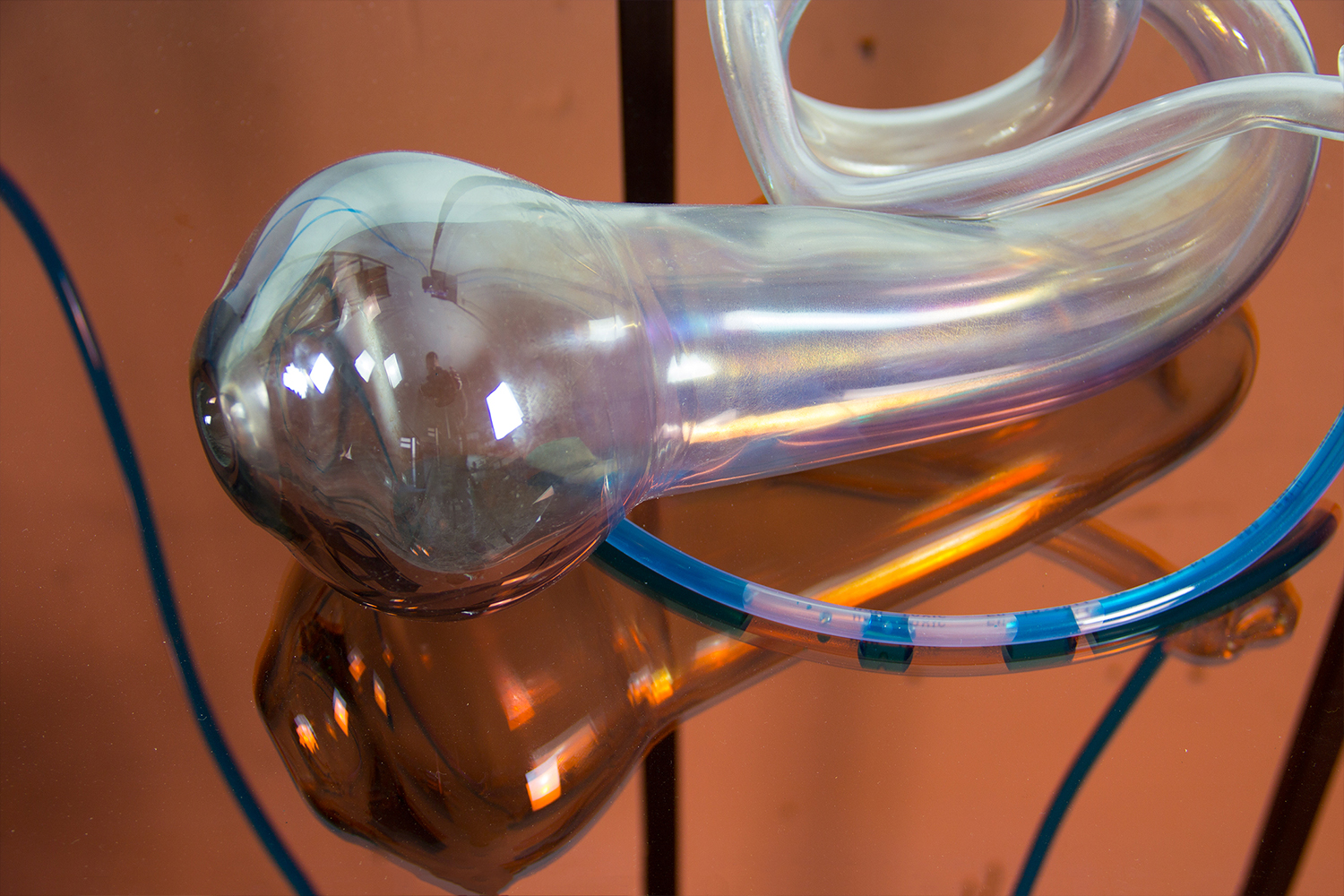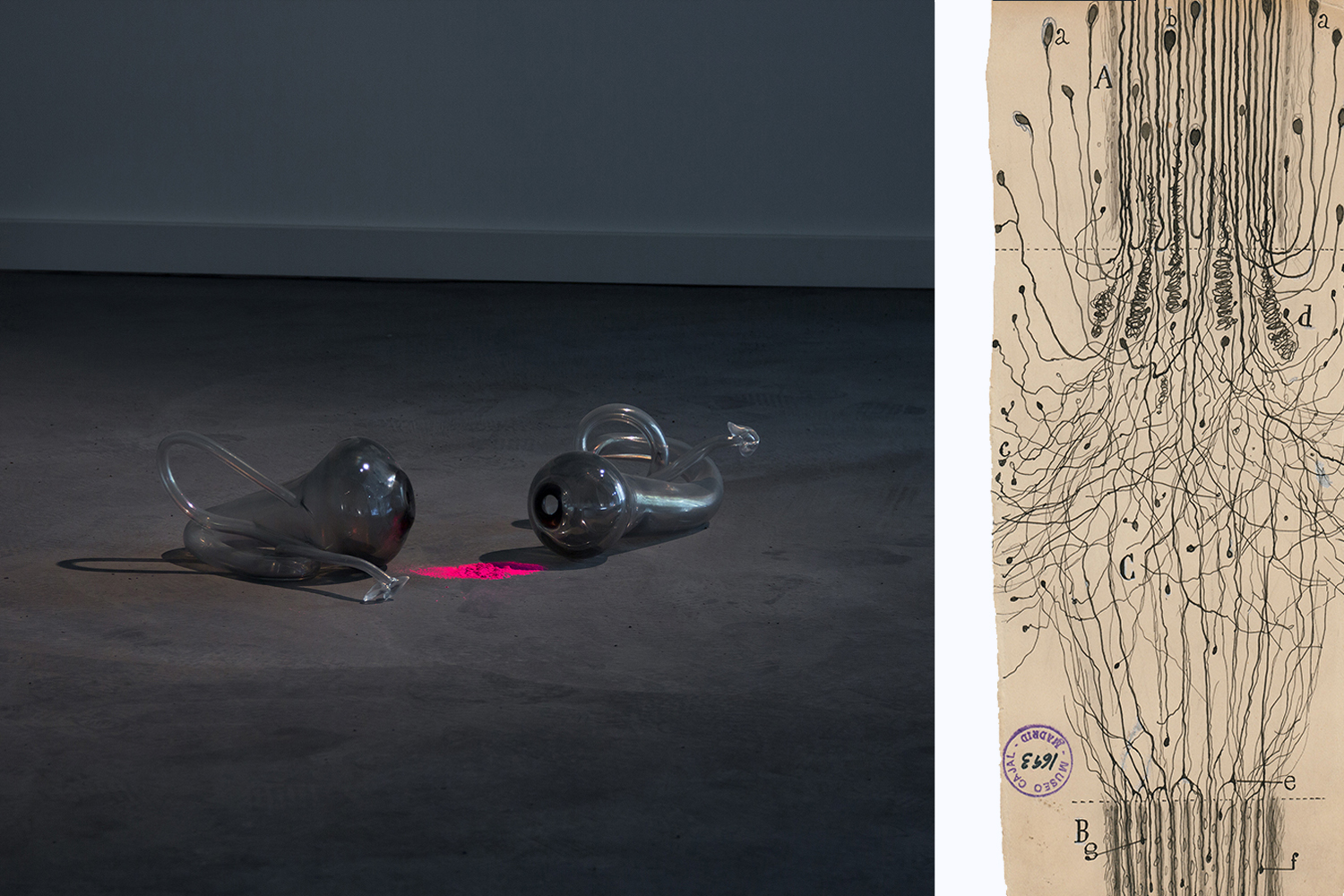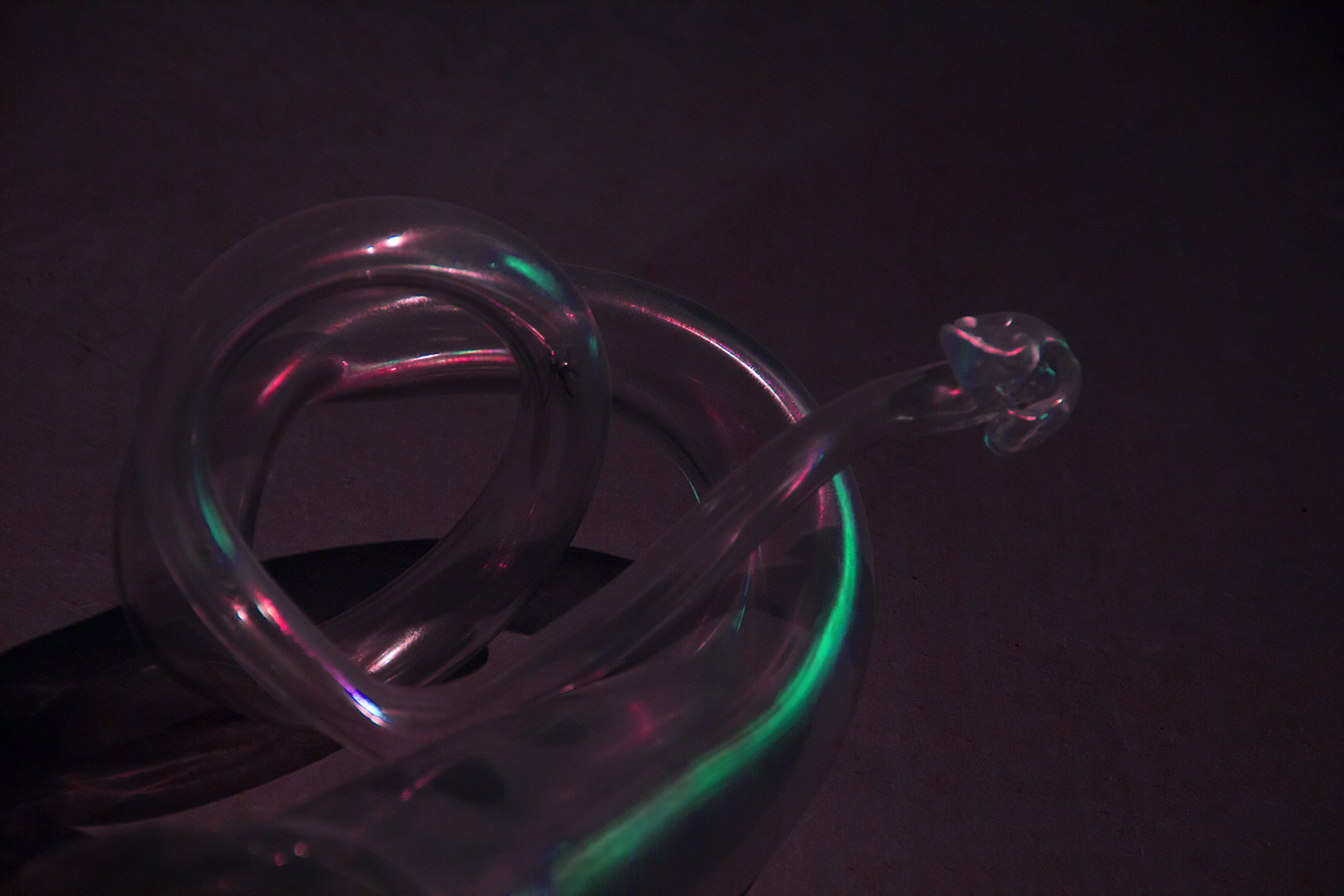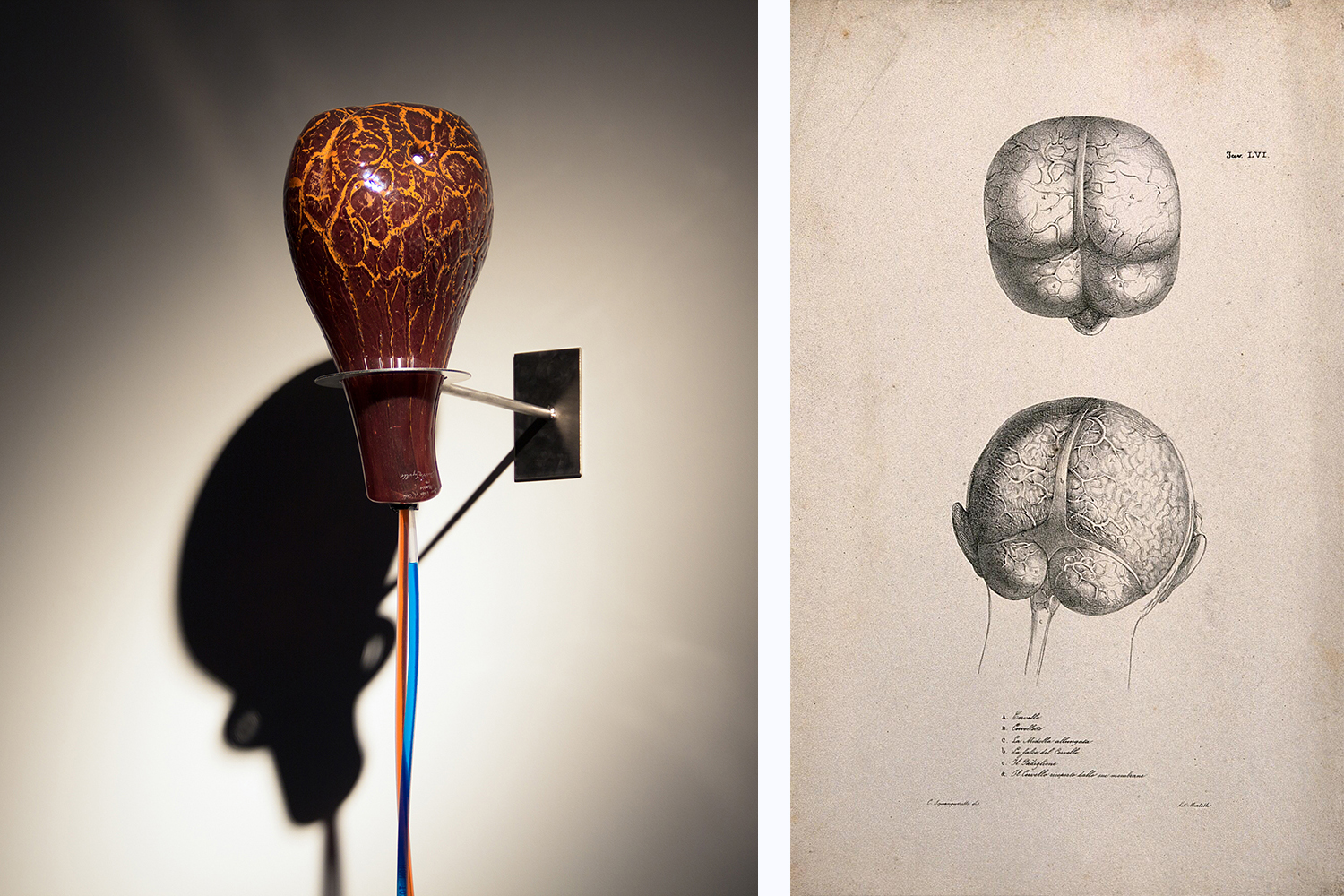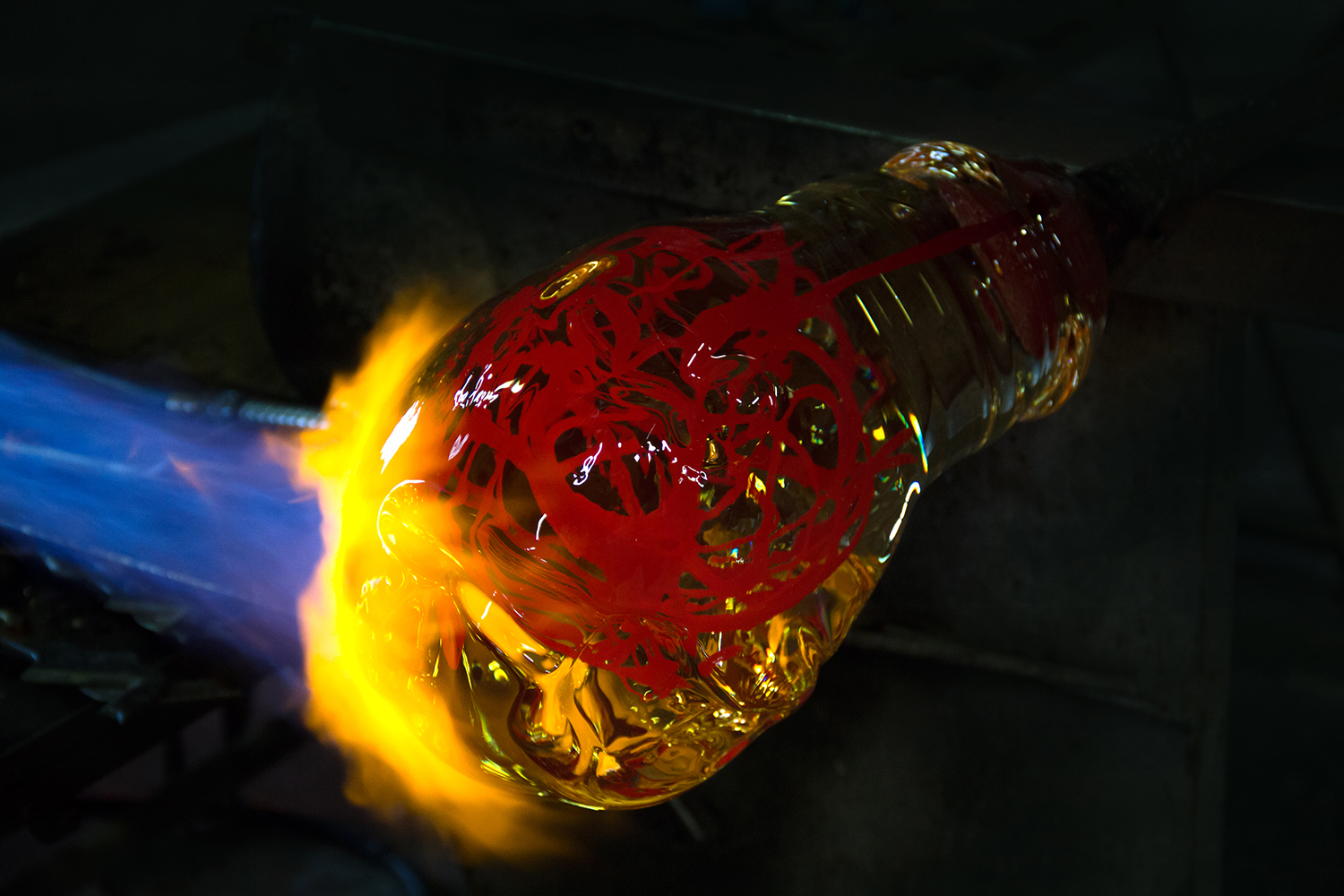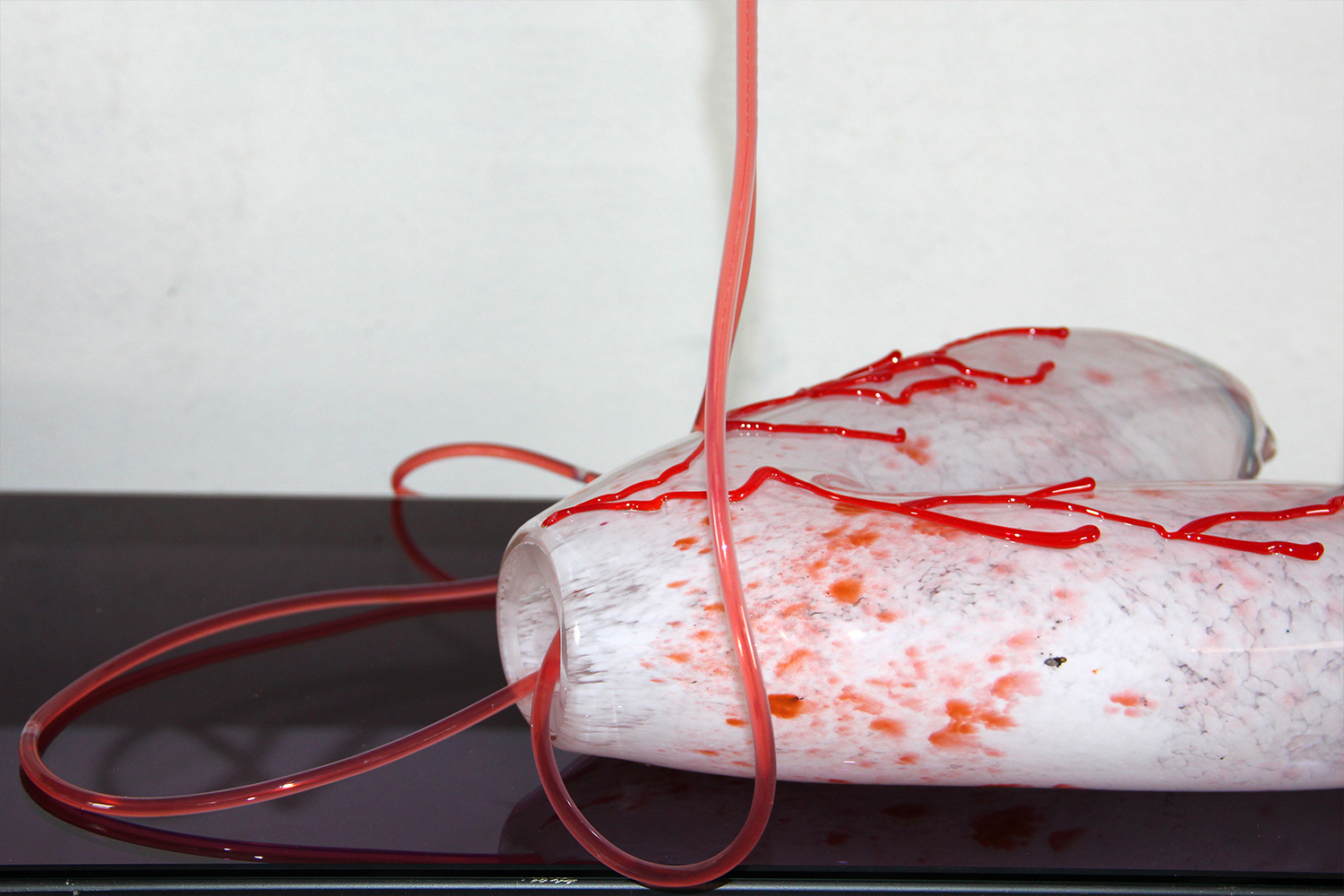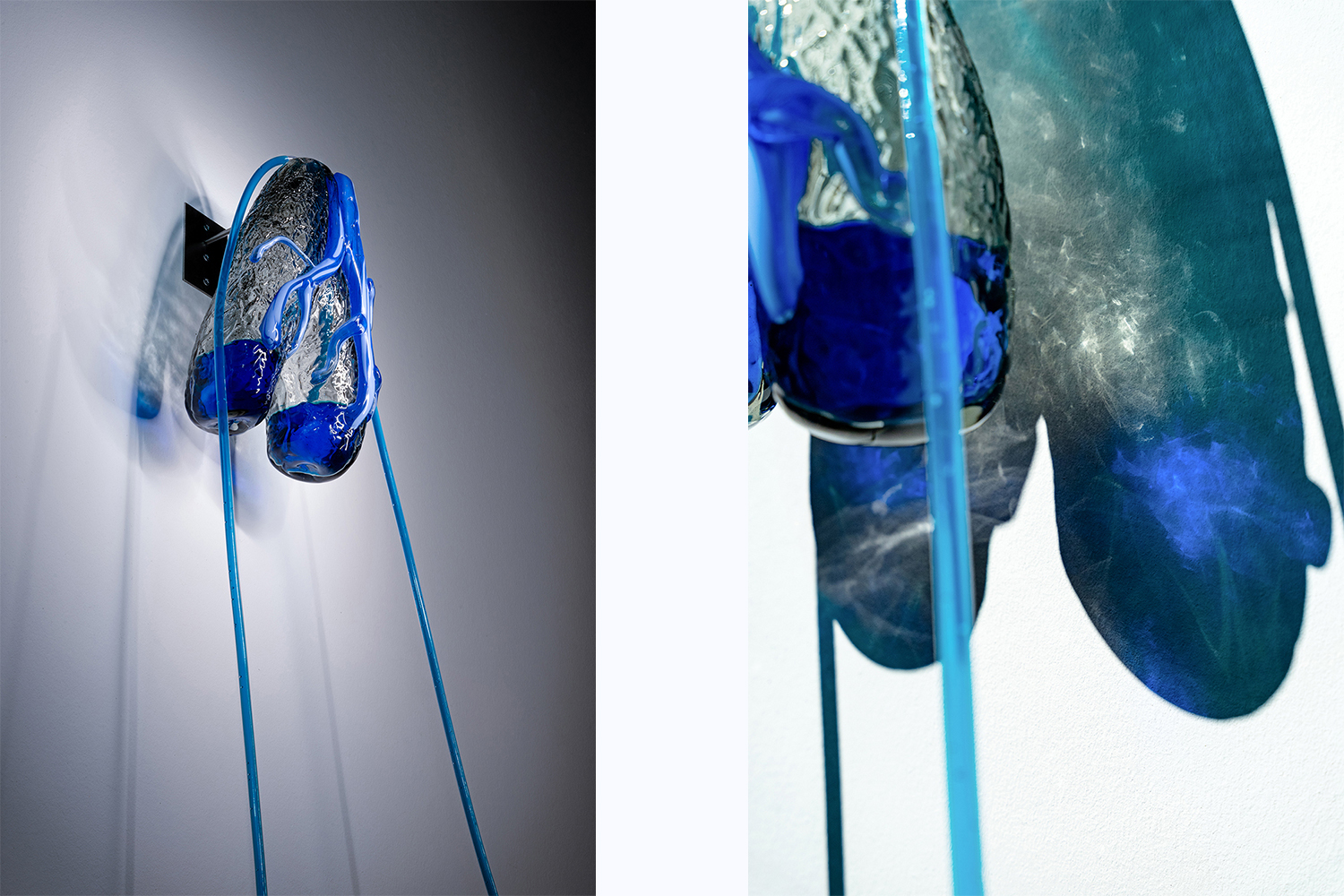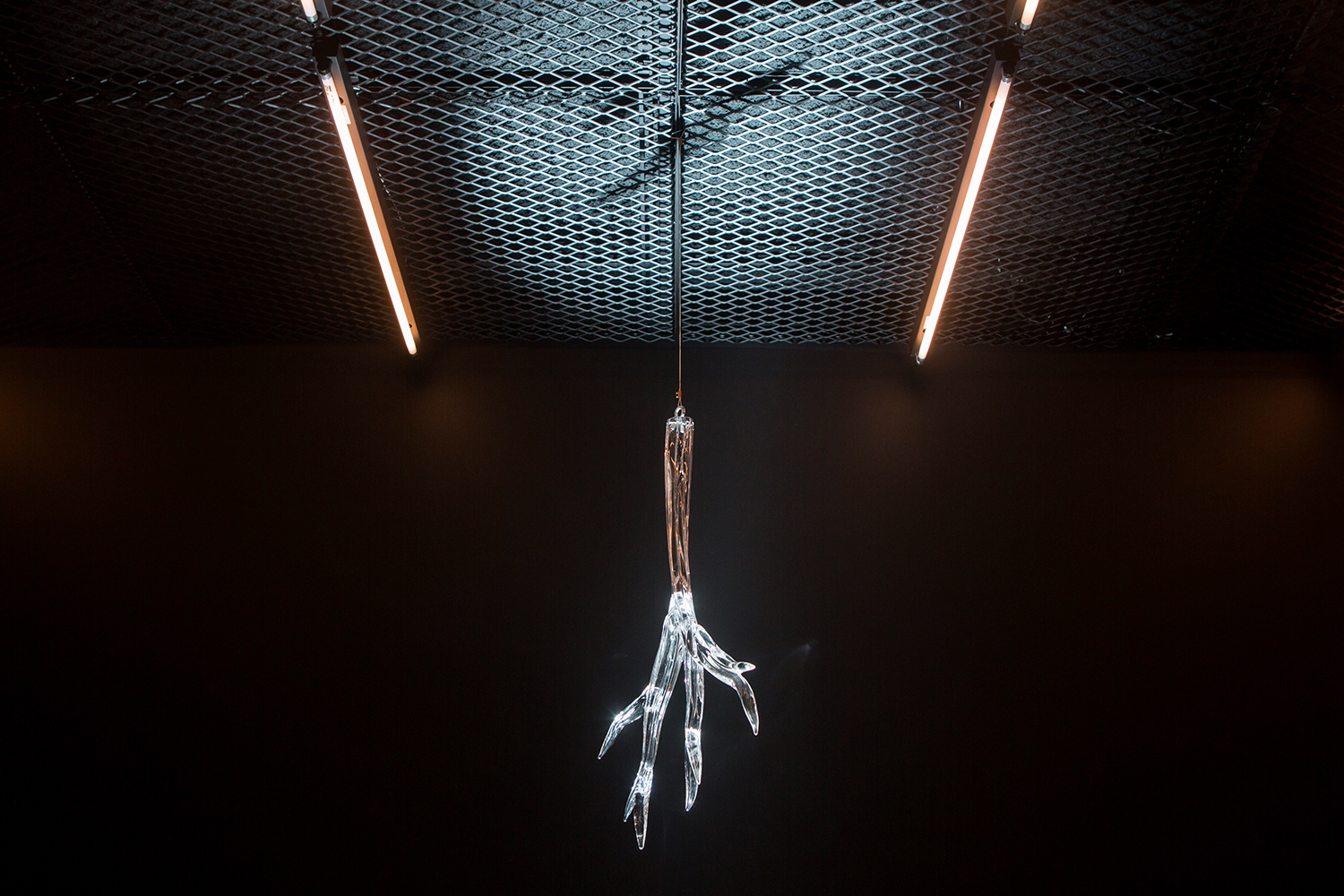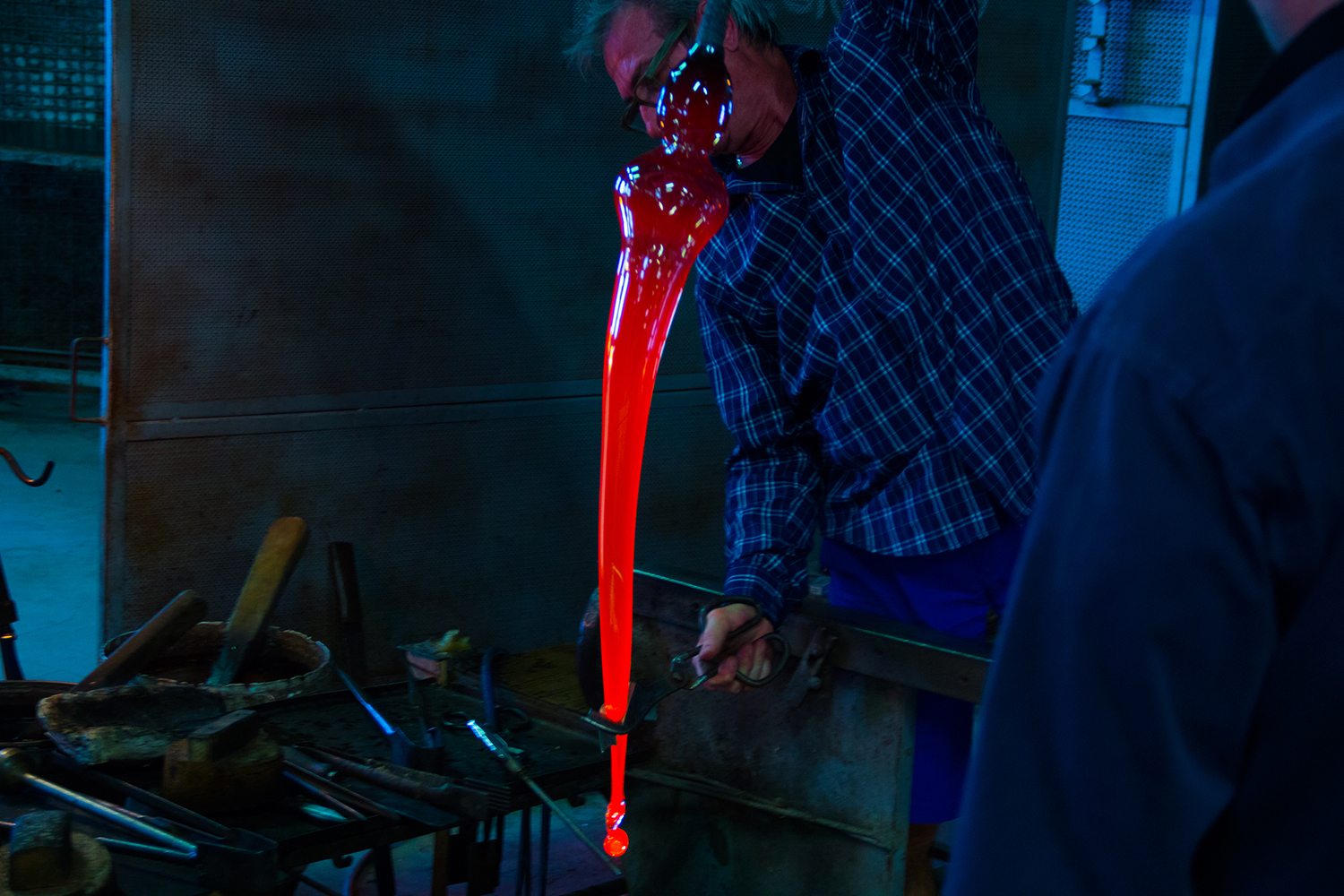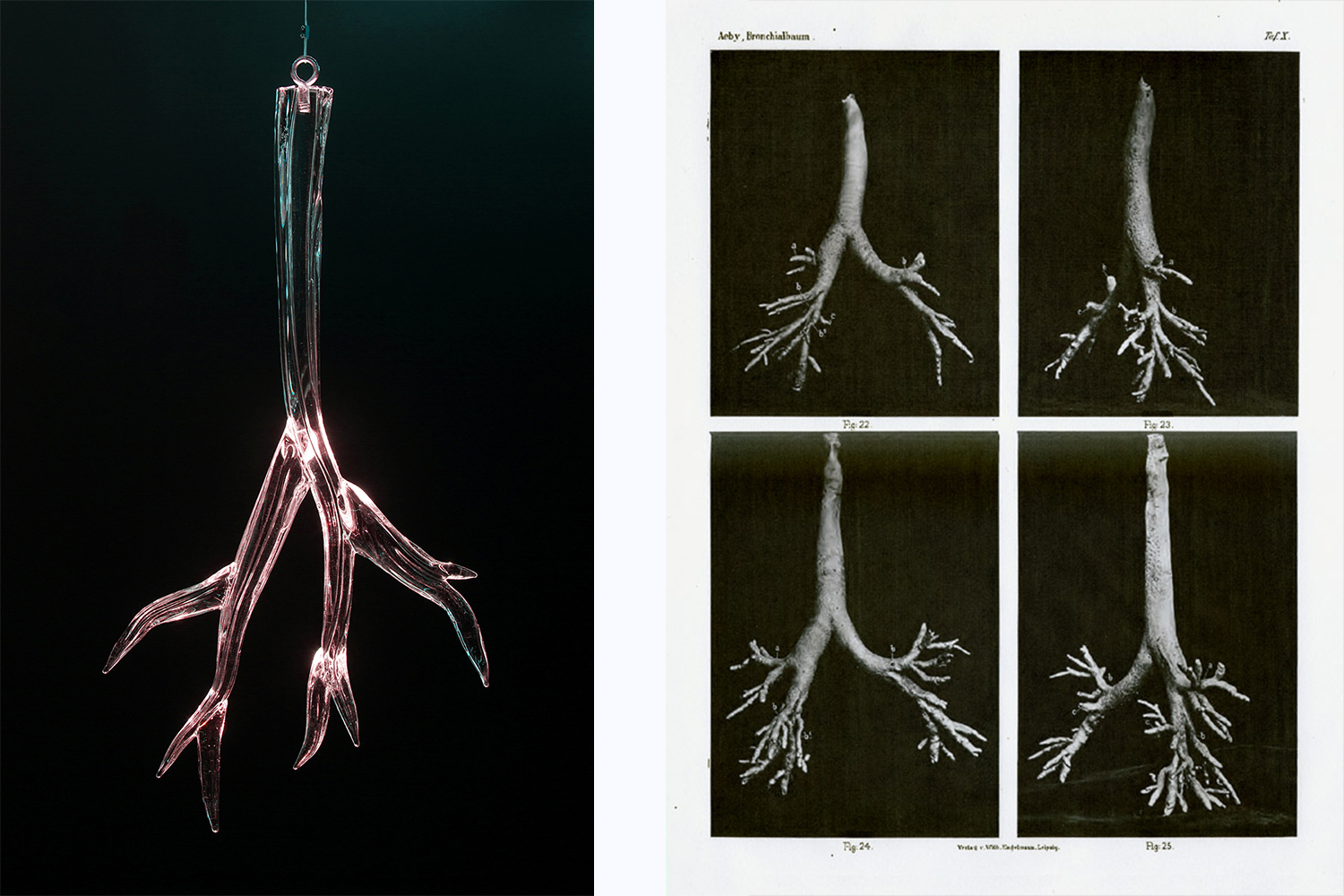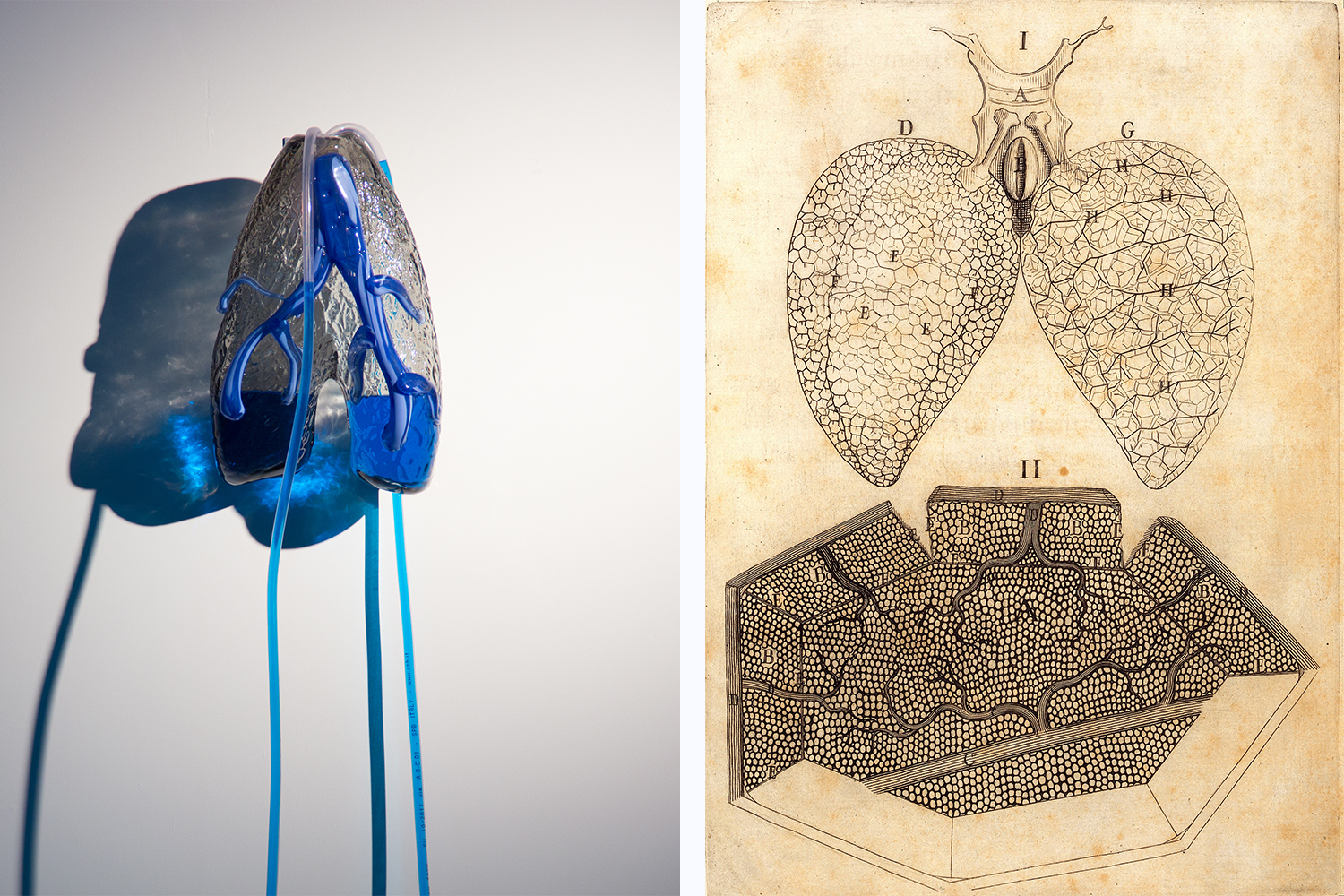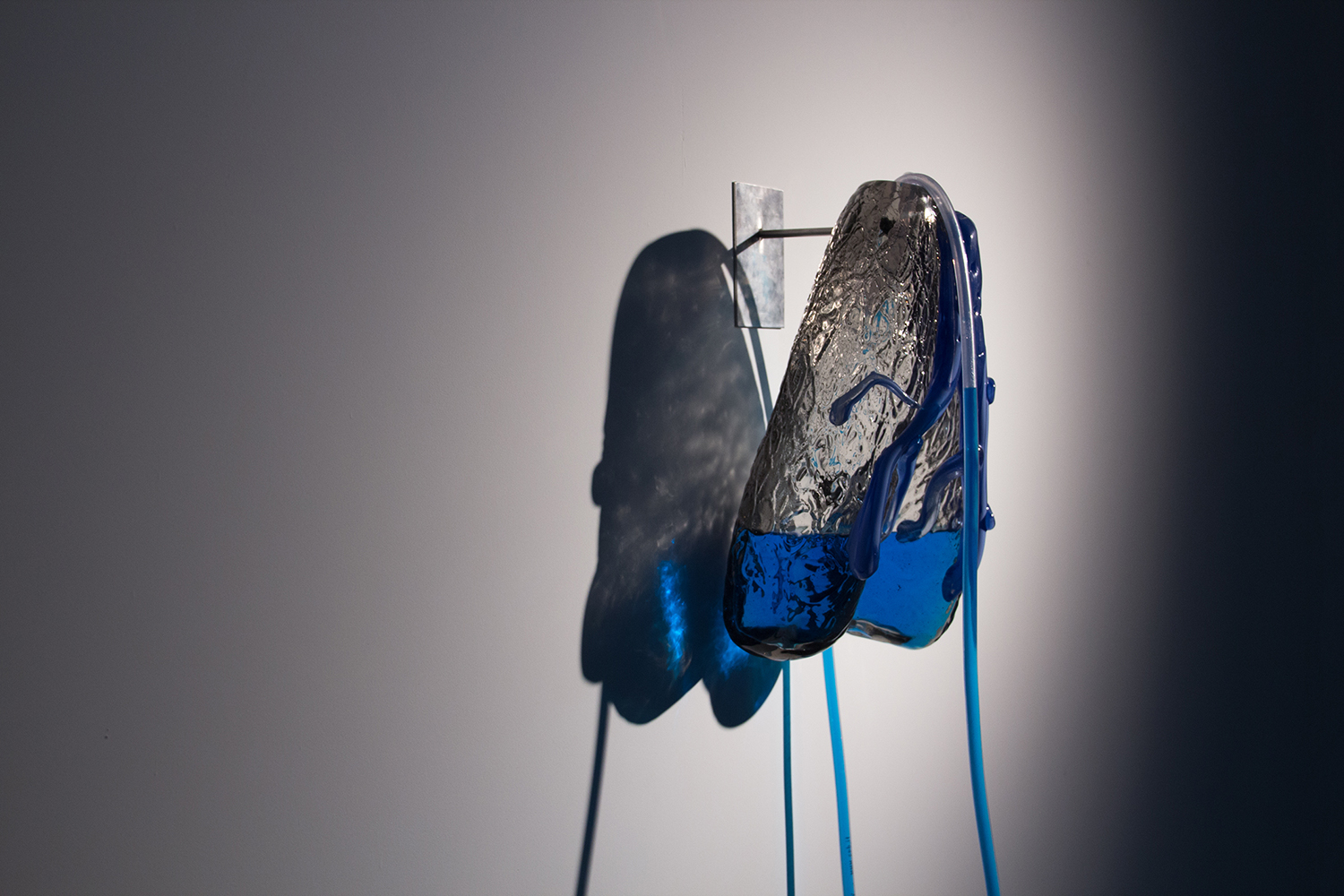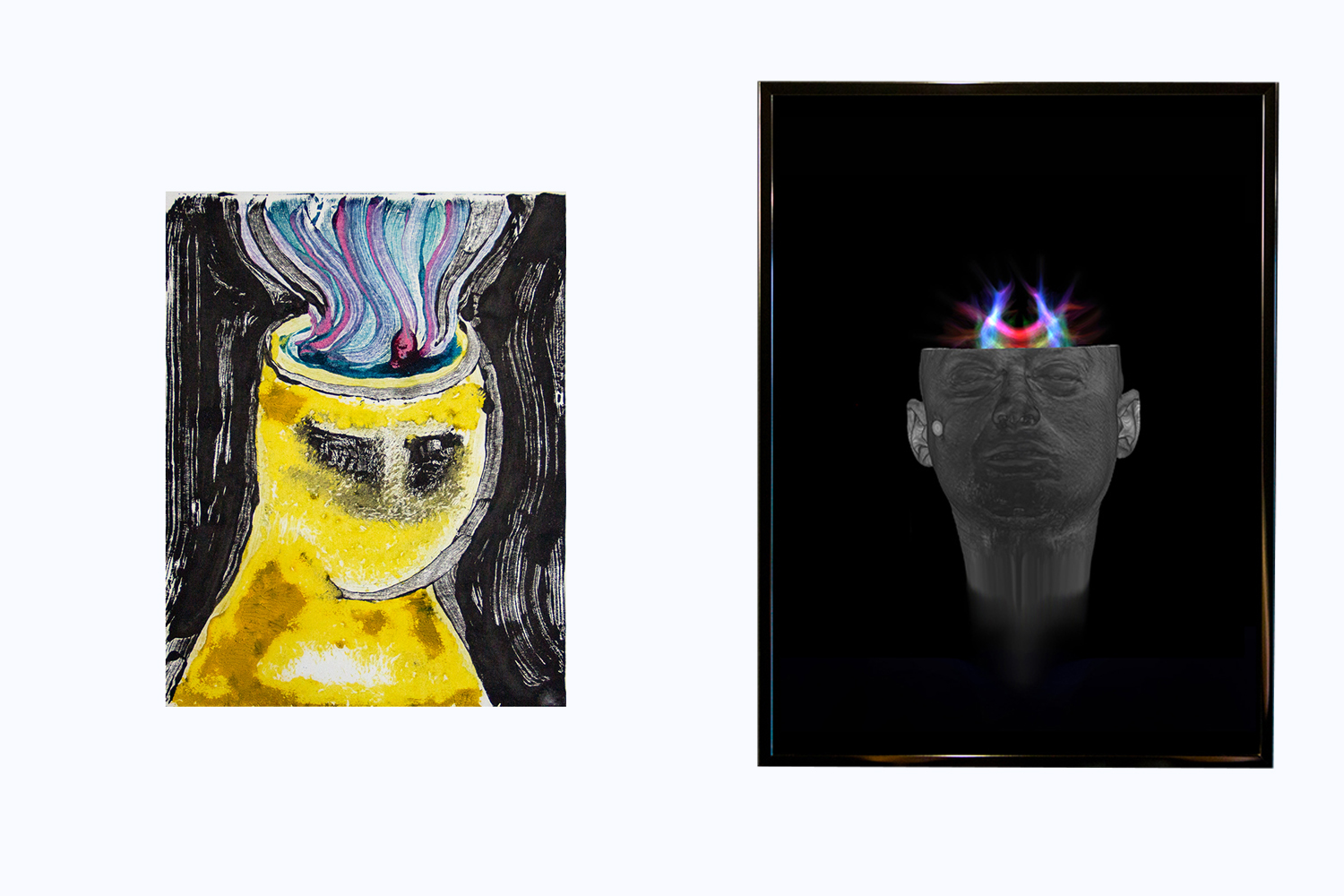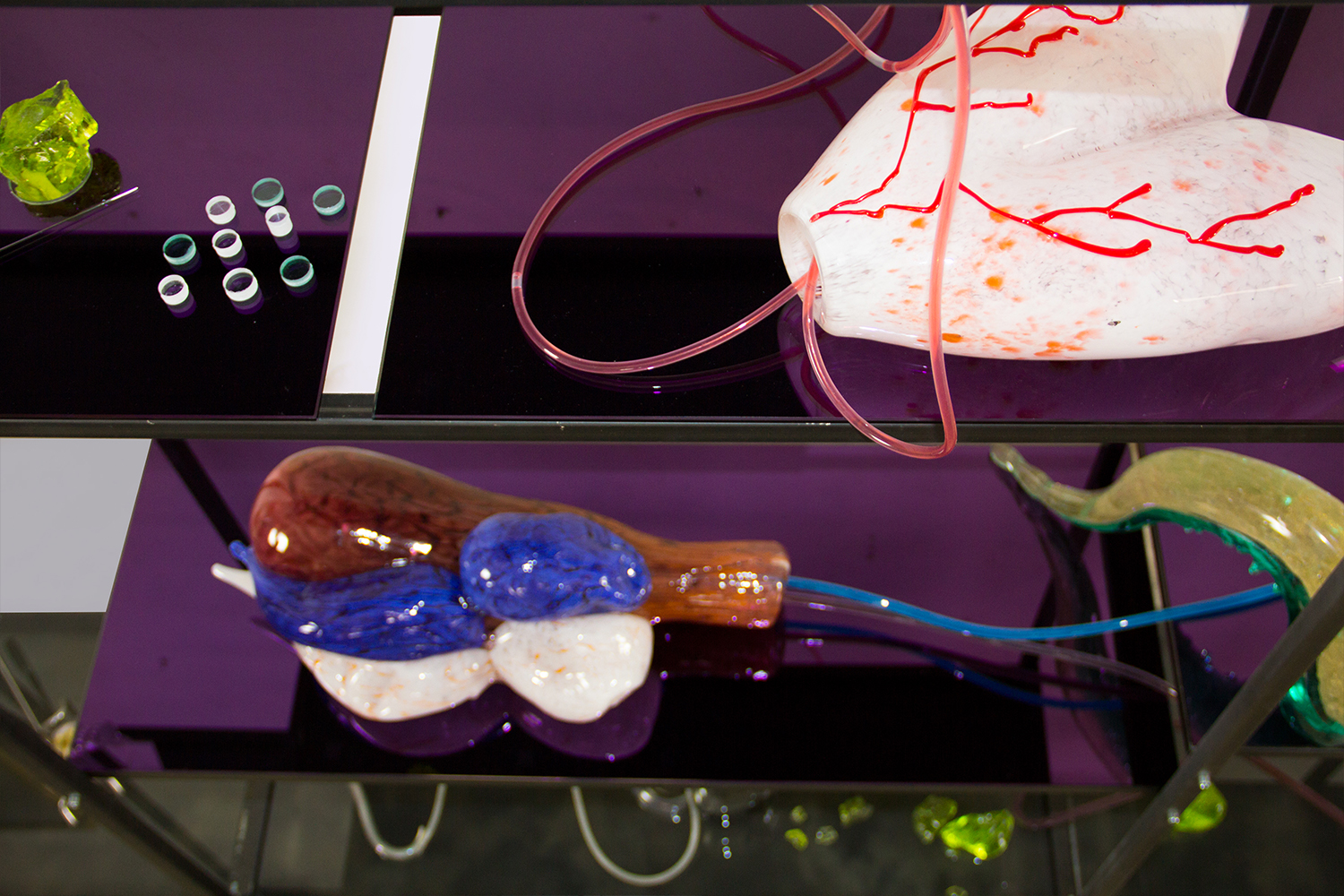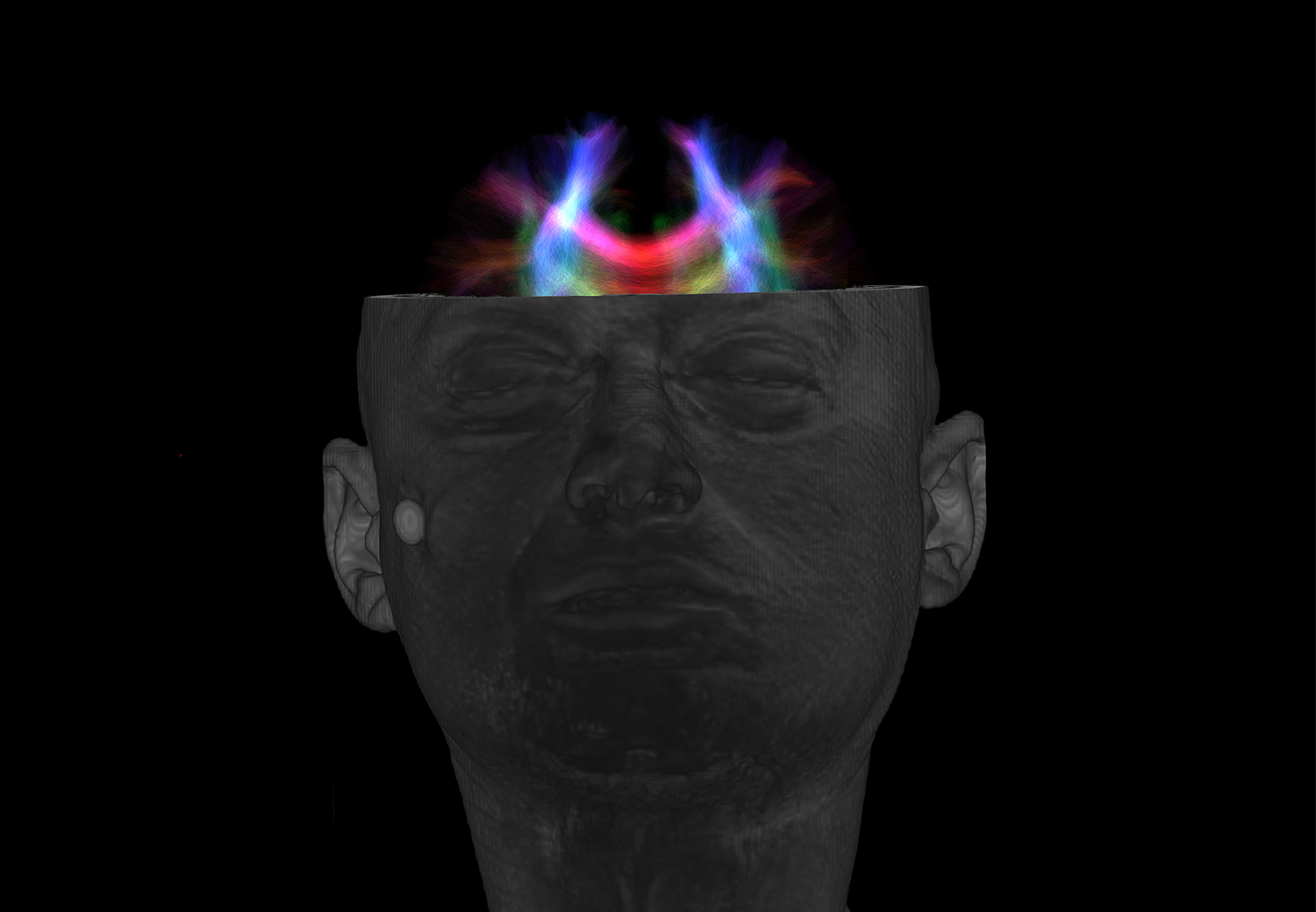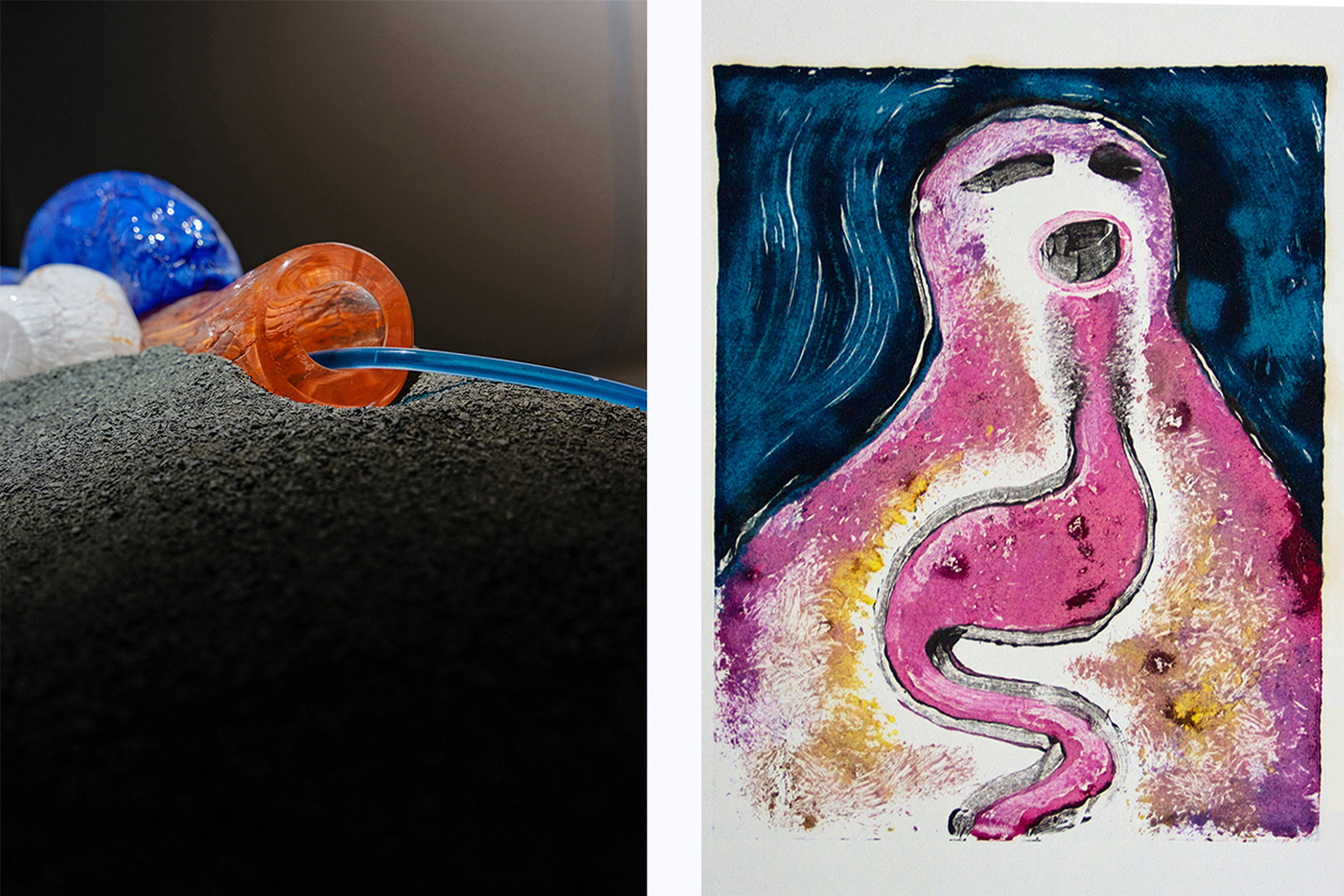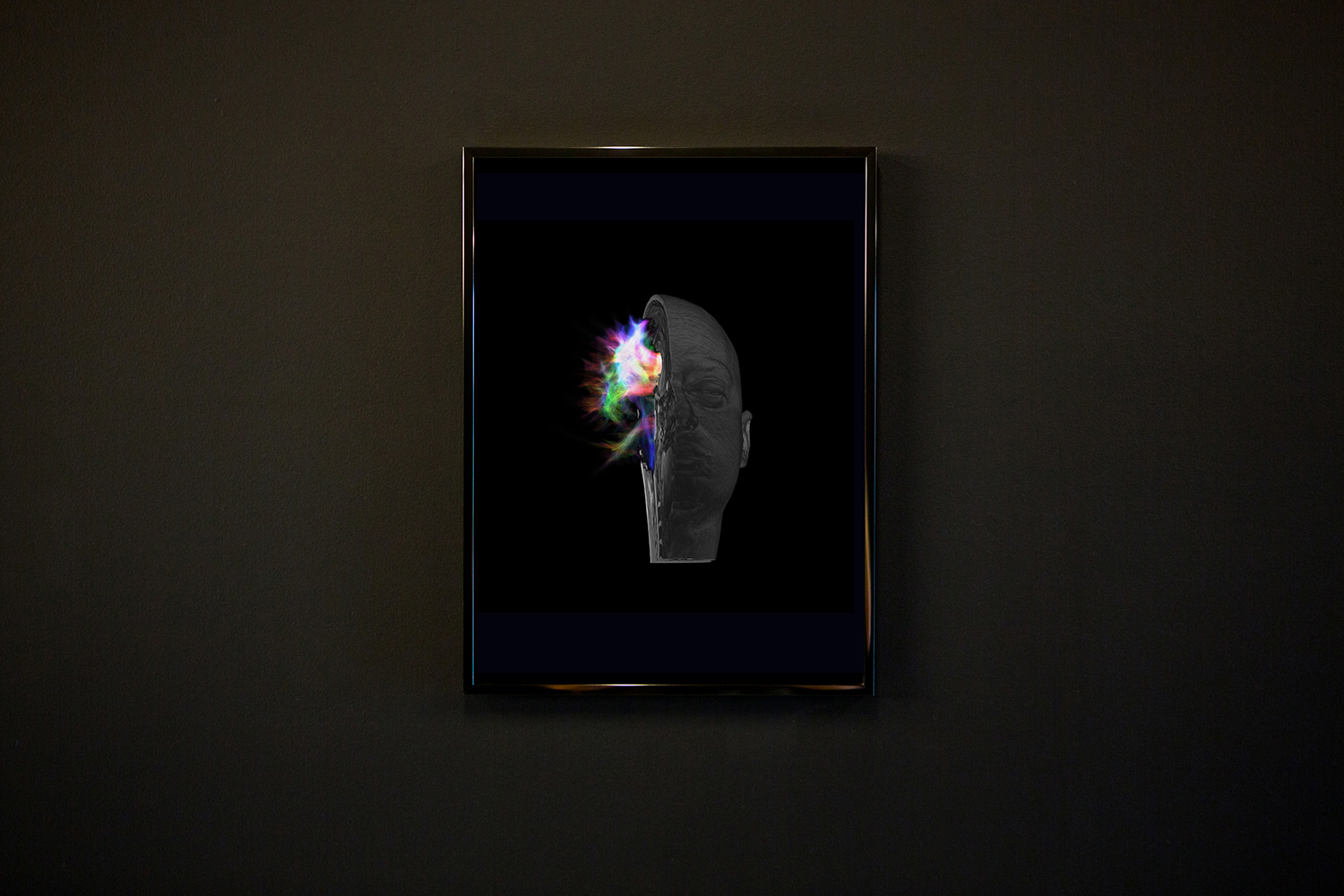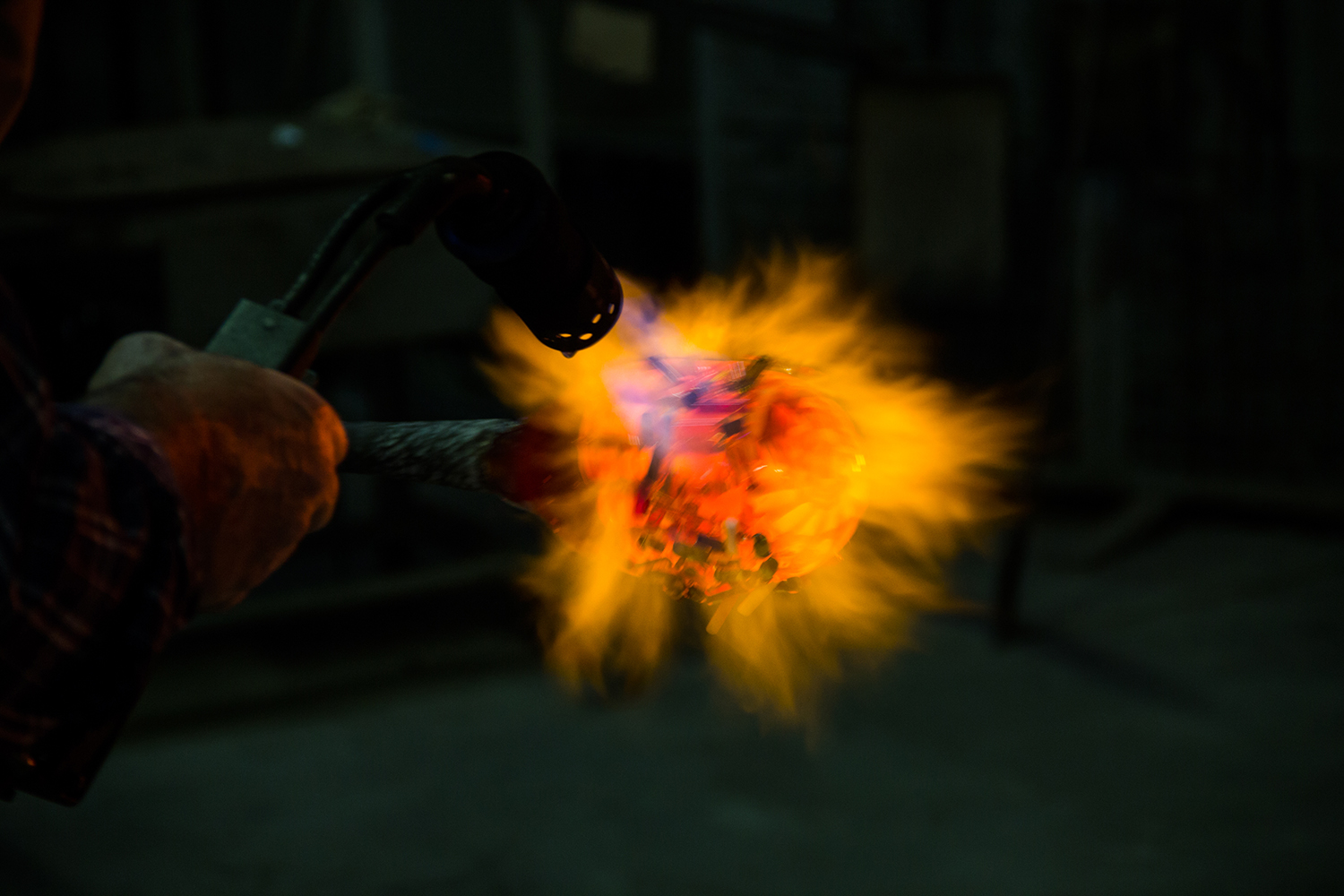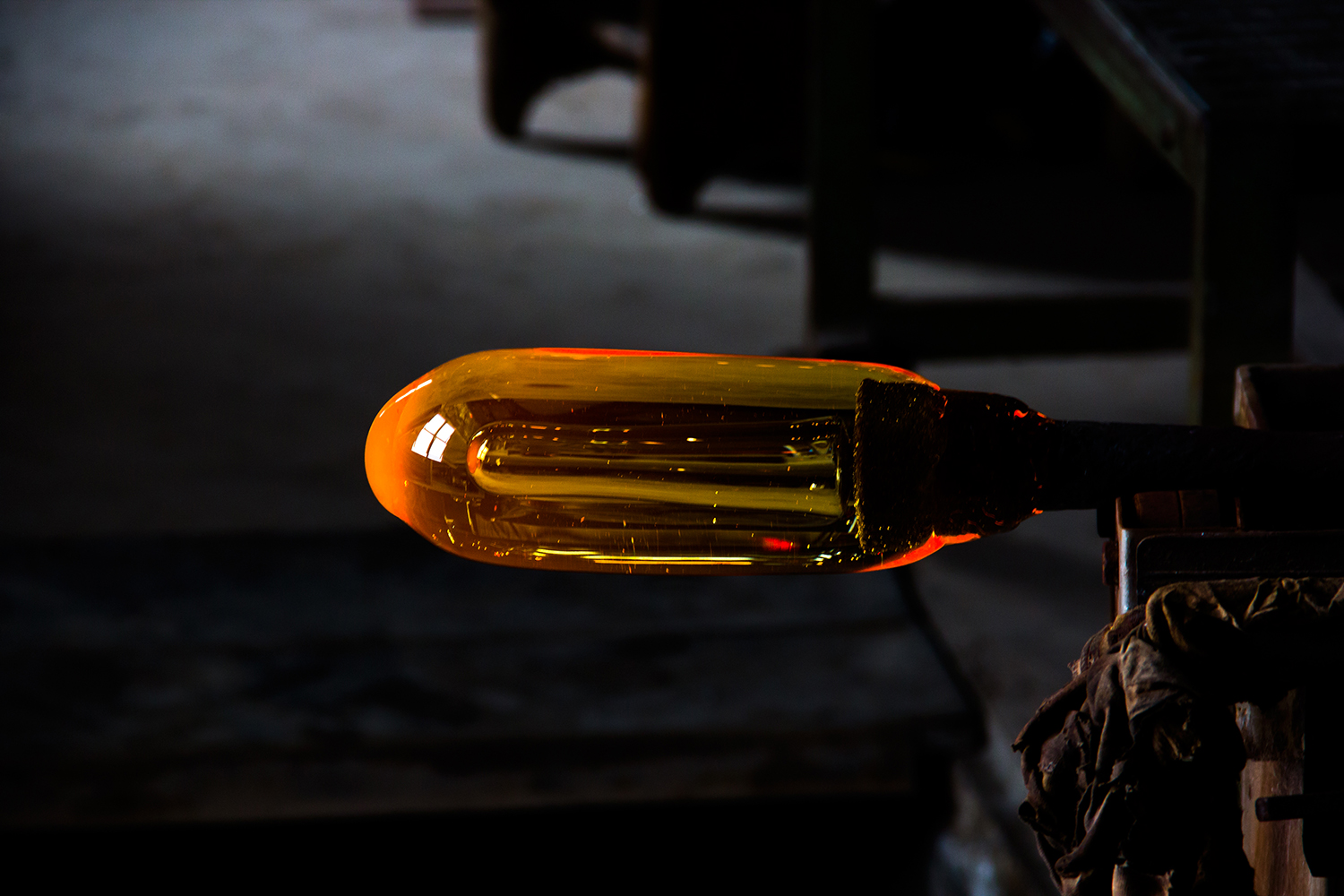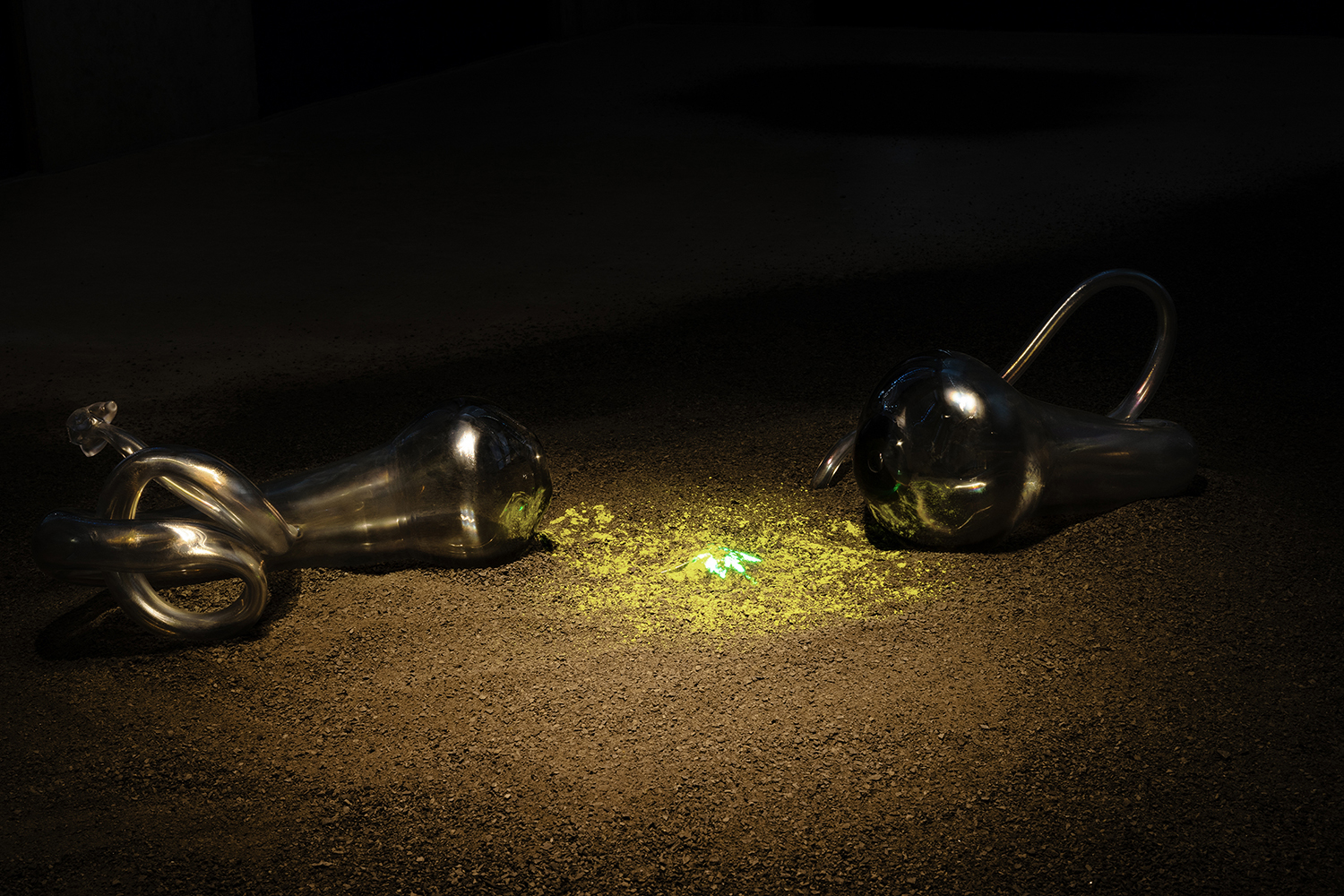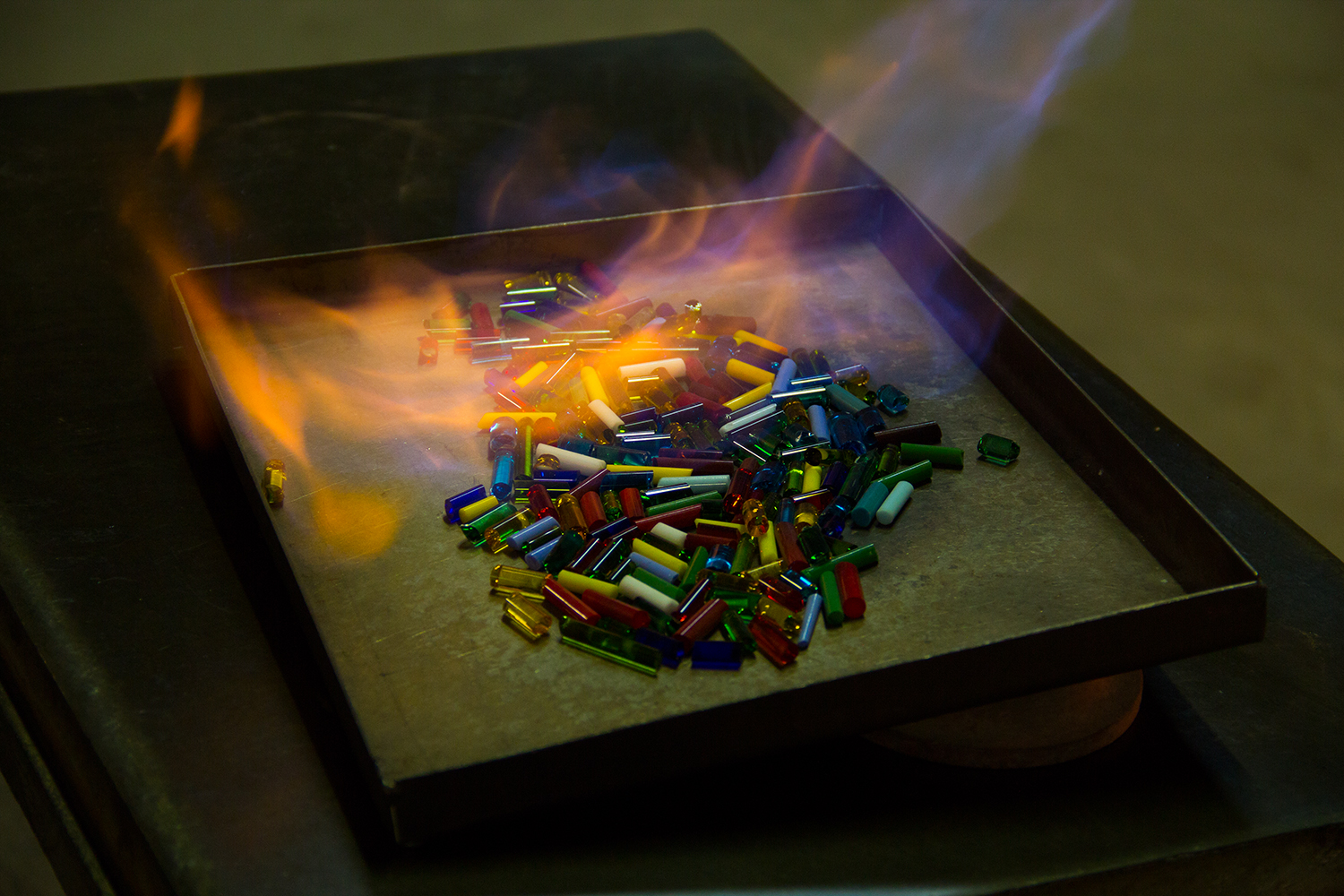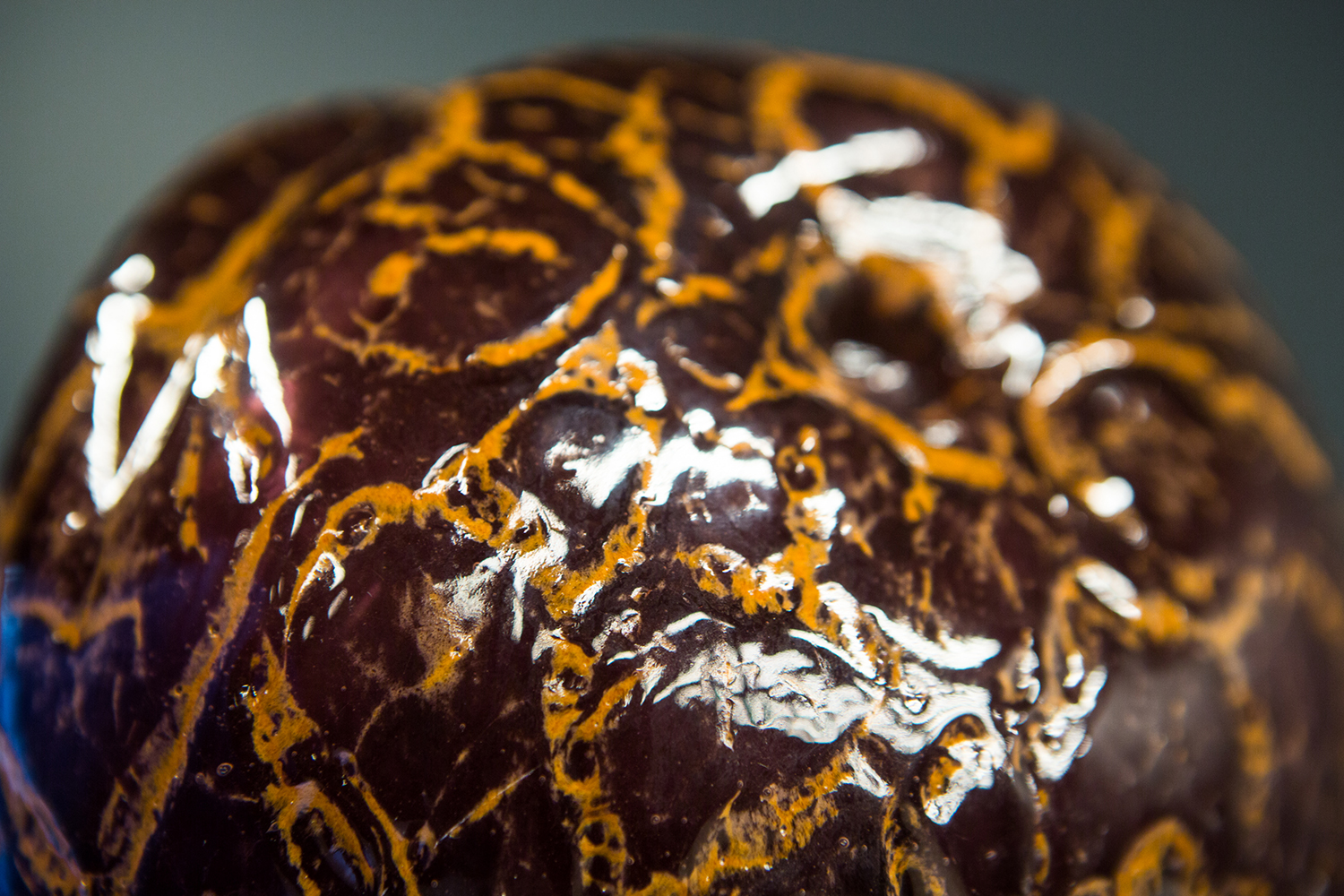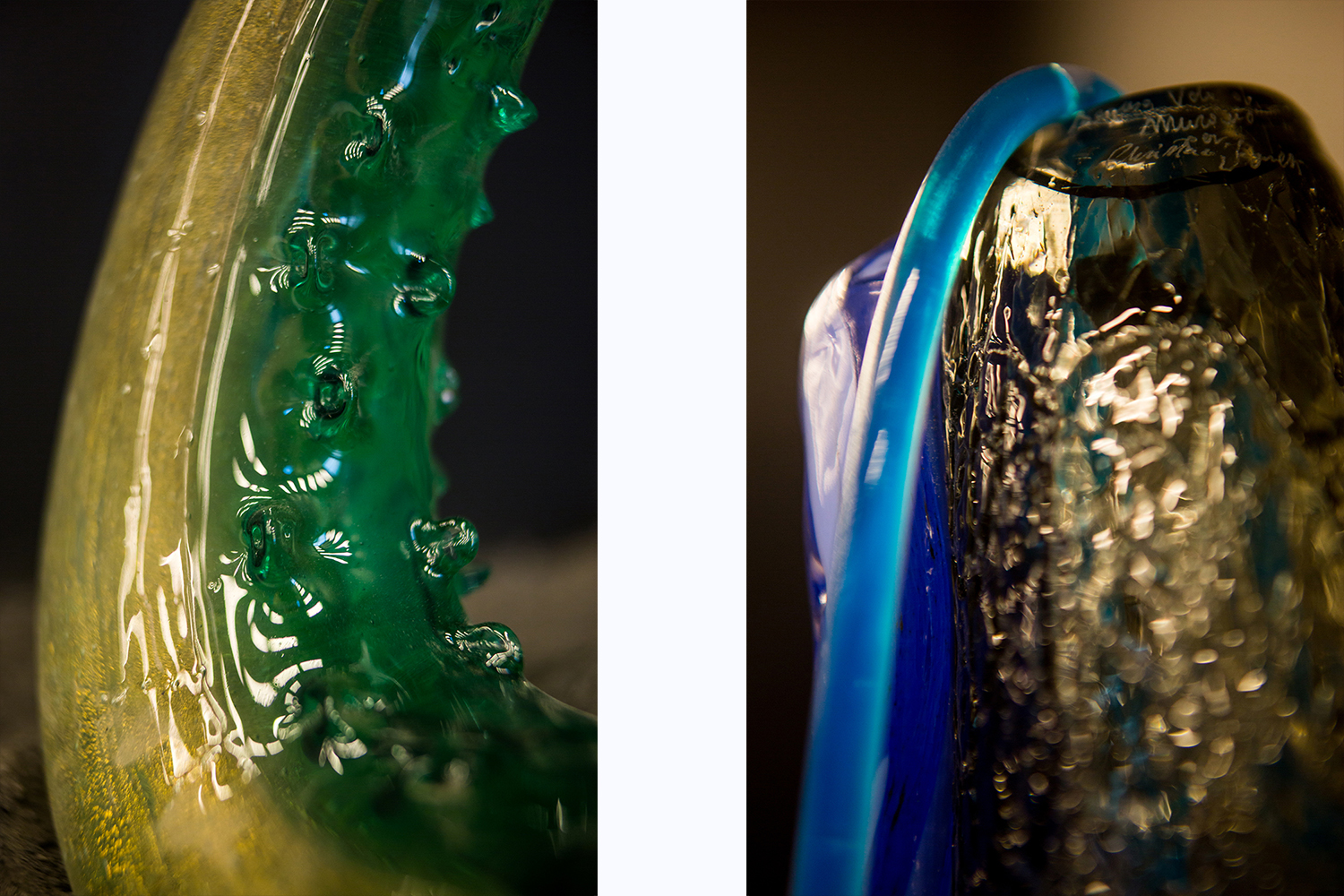Pneuma, glass sculpture, pipe, liquid, mineral sand. Ph. Moritz Graf
Pneuma, installation detail, © Christian Fogarolli
Pneuma, installation detail, © Christian Fogarolli
Esprit/Soul, glass sculptures, minerals | S. R. y Cajal, "A cut nerve outside the spinal cord", 1913
Esprit, glass sculpture, detail. Ph. Moritz Graf
Gheist, glass sculpture, pipes, liquids | Lithograph by Martelli after C. Squanquerillo, ca. 1840
Work in progress at Seguso Vetri d'Arte 1397, Murano. © Christian Fogarolli
Pneuma, installation detail, © Christian Fogarolli
Adem, glass sculpture, pipes, liquids, steel. Ph. René Bade
Pneuma, glass, sculpture, chain, MARe Museum, Bucharest. Ph. Regis Toma
Work in progress at Seguso Vetri d'Arte 1397, Murano
Ziel, 2020, glass sculpture | Aeby, Christoph Theodor, 1835-1885, Bronchia, Comparative anatomy
Adem, 2020, glass sculpture | M.Malpighi, 1661, De pulmonibus observationes anatomicae
Adem, glass sculpture, pipes, liquids, steel. Ph. René Bade
Drawing by patient | Self Brain, inkjet print on fine art paper, 40x30 cm, ed. 1 +AP.
Pneuma, installation detail, © Christian Fogarolli
Self Brain, detail, realized thanks to the tractography processing of data results from (MRI)
Pneuma, glass sculpture | Drawing made by a patient
Artist's Brain, inkjet print on fine art paper, steel frame, museum glass, 40x30 cm, ed. 1 +AP.
Work in progress at Seguso Vetri d'Arte 1397, Murano. © Christian Fogarolli
Work in progress at Seguso Vetri d'Arte 1397, Murano. © Christian Fogarolli
Pneuma, glass sculptures, STATE Studio, Berlin. Ph. René Bade
Work in progress at Seguso Vetri d'Arte 1397, Murano. © Christian Fogarolli
Gheist, detail of glass sculpture. Ph. Regis Toma
Dech | Adem, detaila of glass sculptures. Ph. Regis Toma
The Pneuma project is composed of a series of installation, sculptural, photographic, and video works.
The installation is made of ten sculptures of glass – each sculpture symbolically paying homage to one of the visited countries. Their shape takes its cue from drawings of patients. With their intense surrealist dynamism, such representations of animals, faces, and human organs in tempera, pencil, and chalks seem to celebrate the tension of the creative and healing process. Fogarolli produces the sculptures along with the glass masters of Murano. It is not only a praise to manual labour but, with their fragile semi-transparent profiles, they also recall anatomical shapes in the lithographs and tables of Descartes, Costantino Squanquerillo, Marcello Malpighi, or Christoph Theodor Aeby, to whom Fogarolli has been dedicating his research. These ampoules contain the “breath” of the master glassmakers. This fluid air seems to innervate along the thin translucent “veins” interconnecting each “organ” of the installation with the others. These sculptures re-discuss the alleged binary system of inside and outside, of what is categorised and what is not yet or better has never been.
The photos has been realized thanks to the tractography processing of data results from magnetic resonance imaging (MRI) realized on Fogarolli’s skull at the laboratories of the University of Trento CIMeC – Center for Mind/Brain Sciences, Rovereto / Trento.
